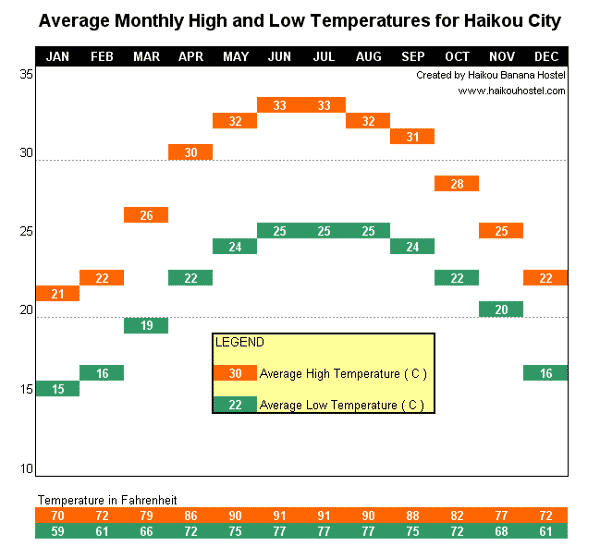Hainan Introduction
Hainan Introduction
Hainan island is characterized by a tropical climate, a relaxed pace of life, and plentiful beaches. Outside Haikou, the capital city, Hainan is relatively undeveloped. Travel a short distance outside the city and you will find villages where people lead a traditional farming way of life in lush green countryside. Around the coastal regions are many beaches. Adventurous travelers who explore can find many unspoilt, natural beaches, unpopulated by tourists. The inner area of the island features jungle and mountains and are good areas for hiking and mountain biking.
A tropical island the size of Taiwan, Hainan is located in the South China Sea. Like islands everywhere, it is a compact unity in itself, a small world of its own away from the grand scale and shifting boundaries of the continent. Like many islands it is a comfortable sort of place, isolated from the currents that have periodically raged in the centres of power.
For a long time Hainan was remarkable only for its intractable indigenous inhabitants and its role as a destination for exiled politicians from the Chinese Mainland. For many people, including many who live there, Hainan is nothing more than a Sun Belt location where life is easy and doesn’t make too many demands on the intellect. The concept that Hainan has its own culture or history fails to make much impression in the indolent atmosphere of the tropical resort.
But culture (or rather, cultures) it does have, and history, too, even if these pale beside the grand cultures and histories of the world’s great metropolitan centres. Hainan has also made its own unique contributions to the world.
- The superior weaving techniques of the Li people (Hlai) helped establish the Mainland Chinese textile industry, now the undisputed powerhouse for the entire world’s garment industry.
- Hai Rui was a Hainanese-born official of the Ming dynasty widely respected and admired for his fairness and uncorruptibility. A play about Hai Rui is said to have precipitated the Cultural Revolution.
- The Hainanese who left to seek their fortune in Southeast Asia did a lot for the places they settled in, including such immortal contributions as Singapore’s national dish, Hainan Chicken Rice, and that world-famous cocktail the Singapore Sling.
- Hainan is the ancestral place of the Soong sisters who played such contrasting roles in the making of modern China.
- Hainan is the home of the Red Detachment of Women, who fought so valiantly against the Japanese. The Red Detachment of Women has passed into the national mythology of modern China.
- More recently, Hainan has put itself on the map for forced landings by US spy planes and events like Triathlons, the Miss World Contest, and the Boao Forum for Asia.
People and Population
Provincial capital: Haikou Population: 9.26 millions (2017) Ethnic groups: Han nationality–totaling 84.1 percent of the population–and the rest are the Li, Miao, Hui and other minority nationalities. The Li nationality has a population of 980,400 people, and the Miao, 45,600. Major Cities: Haikou, Sanya.
Geography and climate
Its topography is low on four sides and high in the center from which radiate the island’s rivers. 20 percent of the island is mountainous,15 percent hilly and 65 percent is plain and tableland. Two major ports, Haikou and Yulin, are along its 1,440-km coastline. The province has an area of 34,000 sq km.

Average Temperture Ranges for Haikou
More than 300 days of a year are sunny days. Hainan has more than 4,000 species of plants, accounting for 15 percent of the country’s total, and 600 of them are native to the island. It is estimated that 344 species of birds and 77 kinds of animals dwell in Hainan, of which gibbons, pangoins, rhesus monkeys and civet cats have been put under state protection. The province also boasts 50 types of minerals.
Economy
Since the 1980s, Hainan province has been a Special Economic Zone of China. Hainan Island is largely untouched by industrialisation and there are few factories. The economy is not subject to the policies of the mainland. Its nominal GDP for 2004 was 76.94 billion yuan (US$9.55 billion), making it the 4th smallest in all of the PRC and contributes just 0.5% to the entire country’s economy. Its GDP per capita was 8,270 yuan (US$998).